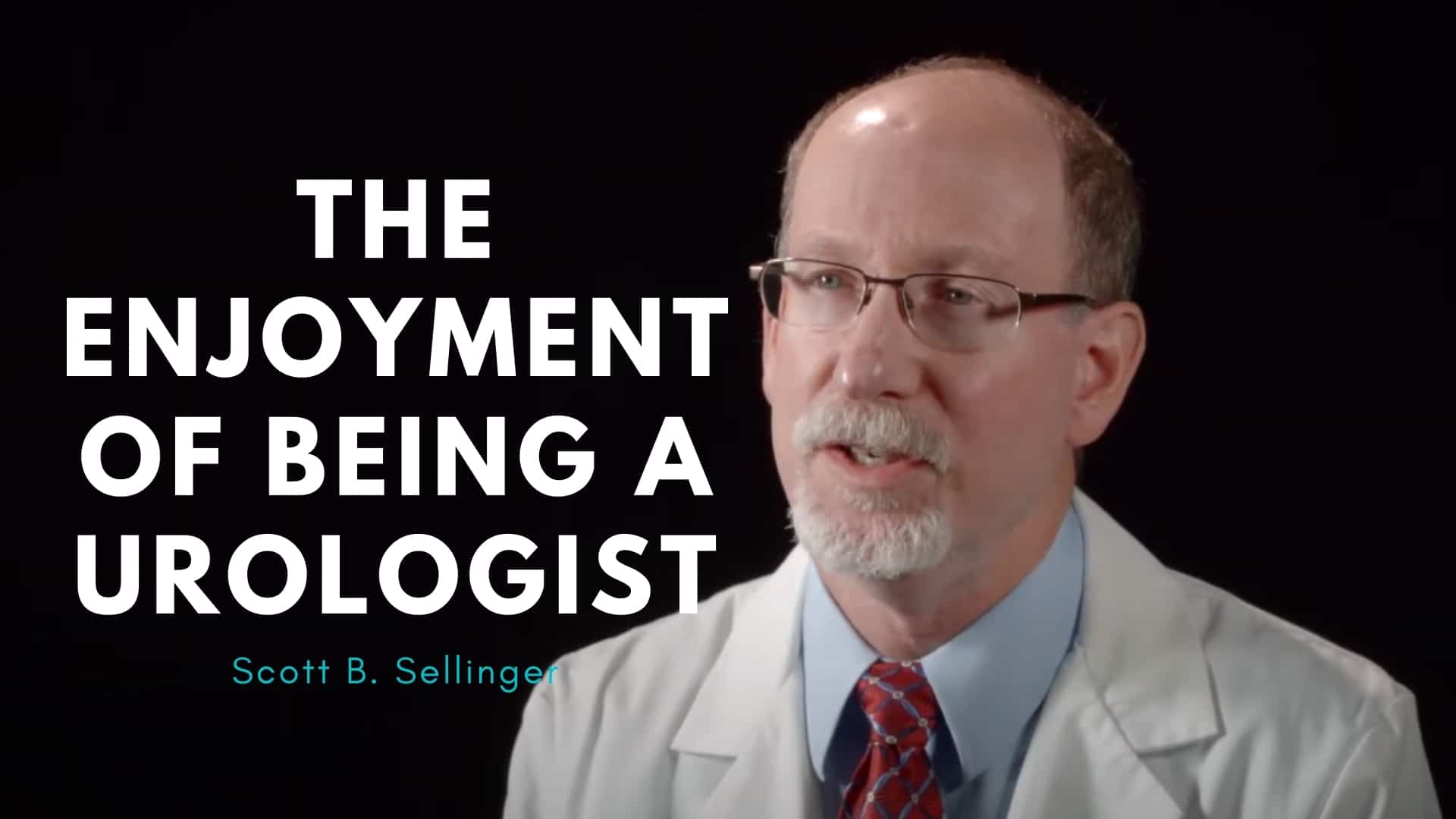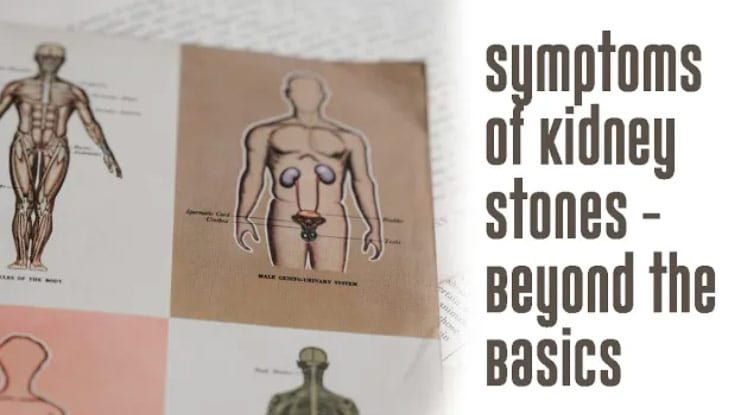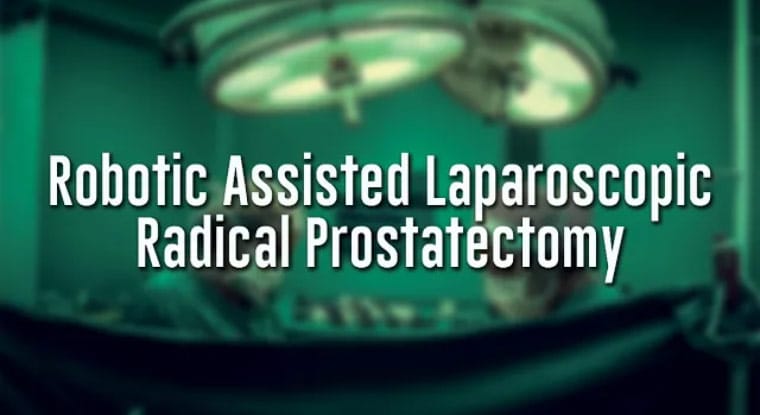Explore the inspiring journeys of Drs. Selinger and Ramos, showcasing the profound impact of a dedicated career in urology.
Continue readingScott Sellinger, MD: Choosing Advanced Urology Institute – My Reasons and Vision
Choosing Advanced Urology Institute in Florida was obvious for Dr. Scott Sellinger in his unrelenting quest for quality in urological care.
Continue readingThe Enjoyment of Being a Urologist
Urology is a wonderful specialty, being at the same time a surgical and medical practice. It offers an interesting mix of work in both the office and the operating room.
“For many of us, we enjoy spending time in the operating room—after all, we are surgeons by trade,” says Dr. Scott B. Sellinger, FACS, a board-certified urologist at Advanced Urology Institute. “But for many of us, we also enjoy interactions with our patients in the office. I love to see my folks, especially the ones I’ve been seeing for the past 25 years. They come back every year and we can chat about all kinds of things.”

Interesting surgical techniques
While most urology patients are followed long-term with medical interventions, at least half of them are surgical patients. The subspecialty of urology offers great opportunities to practice the surgical side of the profession, which includes the hands-on application of the latest technology, such as robots and lasers. “I enjoy the surgical side of our profession, and urology offers innovative techniques and technology that makes surgical procedures even more interesting,” says Dr. Sellinger.
Long-term relationships
The opportunity to build lasting doctor-patient relationships makes urology gratifying.
“As a urologist, you get to care for the entire spectrum of age groups of patients, such as children with congenital problems and patients in their declining years, when a lot of urologic problems tend to set in.” says Dr. Sellinger. “I like the fact that I see different patients every day, delve into their emotional problems, and with empathy, provide the support and solutions they need. I also enjoy speaking with the patients I see every year for several years since every time they come in they have something great to share,” he adds.
Tackling embarrassing problems
Urology brings relief to patients with personal and sometimes embarrassing medical problems. Through surgery, medications or both, urologists resolve these issues and improve the quality of life of their patients, which is quite appealing.
“As a urologist, not only do I treat life-threatening conditions like cancer, I also improve the quality of life of patients by freeing them from sexual dysfunction or incontinence,” says Dr. Sellinger.
Great outcomes
Unlike some other specialties, the treatments offered by urologists often provide quick relief and good outcomes. In fact, most patients treated by urologists do well and get better.
“Nowadays, urology is quite advanced, and we have at our disposal medicines, surgery, and the combination of both treatments that render our patients improved soon after they interact with us,” says Dr. Sellinger. “So we feel satisfied and secure in the knowledge that we can solve most, if not all, of the urologic problems,” he adds.
Because of consistently great results, urologists are held in high regard by their patients, who are usually grateful for the care. In turn, this gives a kind of satisfaction to urologists.
“I am happy that I chose urology. I’m always filled with joy every time patients come back to thank me for what I’ve achieved for them,” says Dr. Sellinger. “If I were to start all over again, I would still choose to become a urologist.”
Personalized, compassionate care
Want to have your urological problem treated by an effective urologist? AUI is a medical group with a long history of providing comprehensive, high-quality care. The urologists at AUI find it a joy to work in an environment that brings out the best of their knowledge and experience for the benefit of their patients.
Whether you have kidney, urinary tract, prostate, pelvic or other urological needs, at AUI you will find a urologist who can deliver the right treatment for you. For more information on the diagnosis and treatment of urological conditions, visit the Advanced Urology Institute website.
Types of Prostate Cancer: What You Need to Know
Prostate cancer is a complex disease. It is not easy to predict how any particular prostate tumor will grow, or how rapidly it will spread to areas outside the prostate. After a prostate cancer diagnosis, your urologist will assess various factors to determine the level of risk associated with the disease. Understanding the risk level—low, intermediate or high—will help you and your doctor make decisions to achieve the best survival rate and quality of life.
Types of prostate cancer
While there are many types of prostate cancers, urologists first divide them into two categories—aggressive and indolent—to begin determining the best treatment.
1. Aggressive prostate cancer
 Aggressive prostate cancer is the type that grows rapidly, spreads fairly early, quickly and widely, and causes massive body damage. Since it spreads swiftly via secondary deposits, it quickly becomes advanced stage cancer and is very difficult to treat, particularly during the later stages.
Aggressive prostate cancer is the type that grows rapidly, spreads fairly early, quickly and widely, and causes massive body damage. Since it spreads swiftly via secondary deposits, it quickly becomes advanced stage cancer and is very difficult to treat, particularly during the later stages.
For aggressive high-risk prostate cancer, treatment is most effective when it begins while the tumor is still in its early stages. Without early treatment, the cells of the tumor remain highly active, multiplying rapidly. The tumor grows swiftly, spreads rapidly and causes widespread damage.
2. Indolent prostate cancer
Indolent prostate cancer is the type that grows very slowly and is unlikely to spread to areas outside the prostate. Therefore, it is a low-risk, low-volume tumor that can exist in the prostate for several years without causing significant problems. Even if left untreated, it is unlikely to spread outside the prostate; and if it spreads, it only does so slowly and locally.
How are high-risk and low-risk prostate tumors identified?
If you are diagnosed with prostate cancer, your doctor will monitor the disease periodically to see if it is growing and spreading. The primary way for monitoring the growth and spread of the tumor is the prostate-specific antigen (PSA) level in blood. PSA is produced by the prostate and reaches the bloodstream; but larger amounts of PSA in the bloodstream are usually a signal that the prostate is enlarged, infected or malignant.
For instance, the PSA doubling time—the time it takes for a patient’s PSA level to double—predicts how aggressive the cancer is. The faster the PSA level doubles, the more aggressive is the cancer. Likewise, the PSA velocity helps to predict the aggressiveness of a tumor. If the PSA level increases sharply, then the cancer is likely aggressive.
Urologists also use the Gleason score to detect how fast the cancer is growing and spreading. This score is obtained by grading cells in the tumor on the basis of how abnormal or normal the cells look under the microscope. The two most abnormal areas of the tumor are evaluated, each given a score from 1-5, and then the two numbers are added. The higher the score (typically 6 or more), the more aggressive the tumor.
While immediate treatment is called for with aggressive, high-risk tumors, a patient can live with an indolent, low-risk tumor for 20-30 years without the cancer causing any serious effects. For the slow growing tumor, we may recommend observation or a watchful waiting called active surveillance, where we monitor the growth and spread of the tumor without medical intervention.
At Advanced Urology Institute, we offer a wide range of treatment options for prostate cancer, including chemotherapy, hormone therapy, radiotherapy, and surgery. But before we can recommend any treatment, we try to determine the risk of advanced disease. For more information on the diagnosis and treatment of prostate cancer, visit the Advanced Urology Institute website.
Erectile Dysfunction Overview
Erectile dysfunction (male impotence) is a man’s inability to achieve or maintain an erection with enough firmness to have satisfying sex. Occasional erectile dysfunction (ED) is common and many men experience it when undergoing some form of stress. But frequent ED can be a sign of serious health, emotional or relationship problems that require the attention of a professional.
How common is erectile dysfunction?
Roughly 30 million men in the United States have problems achieving or maintaining an erection. The frequency of ED increases with age, affecting only 5-40% of men in their 40’s and up to 50-80% of men over 70 years. However, while the risk of ED increases with age, the condition is not an inevitable consequence of aging. Good health is the key to a lifetime of good sexual function.
Who is at risk of erectile dysfunction?
 Apart from occurring frequently among the elderly, ED is often a consequence of poor emotional and physical health. It is common in men with high cholesterol, diabetes, obesity, cardiovascular disease, hypertension, prostate disease, anxiety, damage from surgery or cancer, injuries, stress, depression, performance anxiety, relationship problems, alcohol use, smoking, and drug use. Typically, ED is caused by vascular disease (such as atherosclerosis) that prevents blood supply to the penis, a neurological disorder (like multiple sclerosis) that cuts transmission of nerve impulses to the penis, chronic medical disorders such as Peyronie’s disease, stroke and diabetes, trauma, and operations for bladder, colon and prostate cancer which may affect blood supply to the penis. These risk factors may work singly or in combination.
Apart from occurring frequently among the elderly, ED is often a consequence of poor emotional and physical health. It is common in men with high cholesterol, diabetes, obesity, cardiovascular disease, hypertension, prostate disease, anxiety, damage from surgery or cancer, injuries, stress, depression, performance anxiety, relationship problems, alcohol use, smoking, and drug use. Typically, ED is caused by vascular disease (such as atherosclerosis) that prevents blood supply to the penis, a neurological disorder (like multiple sclerosis) that cuts transmission of nerve impulses to the penis, chronic medical disorders such as Peyronie’s disease, stroke and diabetes, trauma, and operations for bladder, colon and prostate cancer which may affect blood supply to the penis. These risk factors may work singly or in combination.
How is erectile dysfunction treated?
When you visit a urologist, the first step in the diagnosis of the problem is a thorough sexual, medical and psychosocial history. Physical examination with emphasis on the genitourinary, neurologic and vascular systems is performed. From the information gathered, the urologist may request hormone tests (testosterone, luteinizing hormone, and thyroid – stimulating hormone, prolactin and serum hormone-binding globulin), urinalysis, PSA (prostate-specific antigen), lipid profile, and serum chemistry. Functional tests such as prostaglandin E1 injection, formal neurologic testing, nocturnal penile tumescence testing and biothesiometry may be requested, together with imaging studies such as transrectal, testes and penile ultrasonography and angiography.
If erectile dysfunction is diagnosed, the doctor may recommend treatment depending on the cause and severity of the condition. For instance, the urologist may recommend sexual counseling when no organic causes can be established for the problem. Oral medications such as sildenafil, vardenafil, tadalafil or avanafil may be offered to relieve the problem. But for those not responding to oral medicines, the urologist may inject, implant or direct the topical application of drugs such as alprostadil, phentolamine or papaverine. In some cases, an external vacuum or constriction device may be recommended while for other patients hormone replacement therapy may be used to treat severe hypogonadism (lower-than-normal testosterone). Alternatively, the urologist may opt for surgery through procedures such as revascularization, placement of penile implant or surgical correction of venous outflow.
How is erectile dysfunction prevented?
- Eat a healthy, balanced diet that avoids saturated fats and increases the intake of vegetables, fruits and whole grains.
- Reduce cholesterol levels through exercise, medication and diet.
- Maintain a healthy body weight.
- Exercise regularly.
- Seek prompt treatment or professional help for conditions such as stress, depression, hypertension, heart disease and diabetes.
At Advanced Urology Institute, we recognize that effective treatment of erectile dysfunction involves a proper determination of the underlying cause and a frank discussion of both medical and non-medical options. This is why we have assembled an accomplished team of physicians, state-of-the-art facilities and a patient-centered system that responds to the unique needs of each patient. If you are experiencing a urological problem, make an appointment today. For more information, visit the Advanced Urology Institute website.
Symptoms of Kidney Stones -Beyond the Basics
Kidney stones occur when hard deposits (minerals and salts) form inside the kidney. They vary in size and may travel to other parts of the urinary tract. While small stones may not produce any symptoms, some people complain of severe pain in different parts of the body. The excruciating pain can be likened to that of childbirth. Here is a quick guide on common symptoms of kidney stones.
1. Urge to urinate or frequent urination
Most people with kidney stones feel the urge to urinate. However, this will depend on where the stone is located. Those that are close to the bladder can irritate the walls and make the patient feel an urgent need to use the bathroom. These contractions may even occur when the bladder is empty. Keep in mind that unless the stone has moved to the urethra, there is no trouble when urinating.
2. Pain in the groin, back or side
Patients who experience pain around the groin or the lower abdomen may need a diagnosis for kidney stones. The pain also can occur under the rib cage or on the back side. It starts as a dull ache that escalates to sharp wincing pain. And it’s very episodic – it can be severe one minute and then completely subsides. The pain may be mild or barely noticeable. The patient may need to seek medical attention if the pain is very intense.
3. Nausea and vomiting
These two symptoms occur when the stones interrupt the flow of urine. It’s worth mentioning that stretching of the kidneys can cause gastrointestinal upset. And the worst part is that this pain does not subside even after making changes in body position. When patients vomit, they get dehydrated so additional fluids are recommended.
4. Blood in the urine
In advanced stages, a kidney stone can cause blood in the urine. The blood is only visible with dipstick testing or when examined with a microscope. People who spot pink or reddish urine should see a urologist immediately. Sometimes the urine may look like tea. This could be an underlying symptom to a more serious condition.
5. Fever
While this is not a common symptom for kidney stones, it occurs when patients have an infection in the problem area. According to experts, fever can occur when the stones block the flow of urine, which could be an emergency situation. And because the antibiotics can’t penetrate to an obstructed kidney, the obstruction must be relieved. Fortunately some stones may pass on their own without treatment.
Need the services of a urologist? Visit Advanced Urology Institute for professional treatment. Here you’ll find Dr. David Burday and other practicing urologists. They will do their best to put you at ease. For more information on treatment of kidney stones and other urological problems, visit our “Advanced Urology Institute” site.
Robotic Assisted Laparoscopic Radical Prostatectomy
Robotic-Assisted Laparoscopic Prostatectomy is a viable option for treating prostate cancer. It is a minimally invasive method for accessing both seminal vesicles and prostate glands during treatment of prostate cancer. Robotic prostatectomy is performed by an experienced surgical team with the help of advanced surgical robotic technology.
What is Robotic-Assisted Radical Prostatectomy?
Robotic prostatectomy involves the use of a laparoscopic system and Robotic Surgery System called da Vinci® Surgical System. This is a sophisticated robotic system designed to enable the surgeons to operate with enhanced vision, precision and control.
With the help of the surgical system, it is possible to pass miniaturized robotic instruments through keyhole incisions and remove the prostate and other nearby tissues with greater accuracy. During a robotic-assisted radical prostatectomy, it is able to create an incision that extends from the belly button to the pubic bone.
In the Robotic-Assisted Laparoscopic Radical-Prostatectomy, an image processing machine and a three-dimensional endoscope are used to achieve a clear and magnified view of structures around the prostate gland. This makes it possible to extract affected parts with optimal preservation of critical body parts such as blood vessels, nerves and muscles.
During the procedure, the surgeon operates the surgical system using a computer console that enables him to control tiny flexible instruments. This makes it possible to achieve higher precision and mobility. The whole process is done without the surgeon’s hand entering the area of the surgery in the patient’s body.
Advantages of Robotic-Assisted Laparoscopic-Radical Prostatectomy:
Robotic prostatectomy has some benefits compared to the traditional open surgical methods. Here are some of the advantages:
- Less pain
- Less loss of blood during the operation
- Shorter stay in the hospital.
Possible risks of Robotic-Assisted Prostatectomy:
The following are possible risks associated with the Robotic Assisted Laparoscopic-Radical Prostatectomy, although they are very unlikely:
- Damage to adjacent tissue or organ
- Infection of surgical site
- Bleeding
Laparoscopic Radical Prostatectomy:
As with all surgical methods, the robotic-assisted radical prostatectomy has a number of potential side effects, which include:
- Urinary incontinence or inability to control urine. However, this problem will reduce over time.
- Erectile dysfunction or impotence: Depending on the age of the patient, erectile function is likely to be affected.
Advanced Urology Institute is a patient-centered institute that works to minimize the possible side effects of a procedure. They research and partner with the best board-certified urologists, among them Dr. David Burday, to make sure that patients have a good experience during the operation and heal well afterward. For further information, visit the “Advanced Urology Institute” website.
Signs and Symptoms of Low Testosterone
Low testosterone (hypogonadism) is increasingly becoming a serious health concern for men. More men are being diagnosed with the condition, with studies indicating that 4 out of 10 men who are 45 and older have low testosterone (low-T). Likewise, 25 percent of men between 30 and 79 have low-T while about 50 percent of men over 80 have the condition. In fact, low testosterone is so common in men of various ages that numerous TV commercials have been created to make money promoting low-T solutions.
So what is low testosterone?
Also known as Testosterone Deficiency (TD), low-T refers to abnormal blood levels of the male hormone testosterone. The condition is characterized by testosterone levels below 300 ng/dl (nanograms per deciliter) in male patients when the measurement is done correctly. While low-T problems primarily occur in adult males, they are not restricted to male adults. However, when the condition occurs in women and young men, its definition and characterization are slightly different and less clear than for male adults.
Symptoms of low testosterone
Although the symptoms of low-T may differ from one man to another, the most common sexual signs are fewer and weaker erections and reduced sex drive, while non-sexual indicators are depression, low iron levels, increased fat around the waist and lack of energy. Other symptoms of low-T are reduced lean muscle mass, erectile dysfunction, irritability, absent or reduced orgasm, reduction or loss of facial, armpit or pubic hair, sleep disturbances, reduction in strength, sweating or hot flashes, breast enlargement or discomfort, reduction in testes size and memory reduction. Other signs observed only in tests or by doctor examination include osteoporosis, anemia, increased body fat and absent or reduced sperm production.
Treatment of low testosterone
While there are several options for treating low-T, the right treatment for any patient depends on various factors, including the severity of the symptoms, cause of the condition and the patient’s preferences. For instance, if the low-T is caused by lifestyle, a change of habits such as losing weight may be an effective and natural way to boost testosterone levels. Similarly, testosterone levels can be enhanced through supplementation. For men having bothersome or worrisome symptoms such as depression, testosterone replacement therapy (TRT) applied as a skin gel or a regimen of regular injections can improve testosterone levels and alleviate the symptoms.
At Advanced Urology Institute, we recognize that low testosterone is a common burden on many men. We endeavor to provide viable solutions including the safest and most effective testosterone replacement therapy for the needs of all our patients. Driven by the belief that every patient is unique and may suffer from serious complications if treatment is generalized, we deliver a highly personalized replacement therapy to our patients. We also follow our patients very closely and ensure we give testosterone therapy the right way. For more information on safe and effective treatment of low-T, visit the “Advanced Urology Institute” site.
Common Cause of Kidney Stones
Kidney stones are a common condition in the United States affecting about 9 percent of Americans. Every year, roughly 500,000 patients are admitted into emergency rooms because of kidney stones. While the prevalence of the condition has risen over the years, increasing from 1-in-20 people in 1994 to 1-in-11 in 2012, the trend is expected to continue, both in broader geographic coverage and in greater numbers due to extreme temperatures associated with climate change. Higher temperature leads to dehydration, which in turn contributes to increased concentrations of dissolved salts and other substances in urine. When urine is super-saturated, it allows kidney stones to develop.
Low Urine Volume
The risk of kidney stones increases with decrease in urine volume. Caused by poor fluid intake or fluid loss (dehydration) due to hard exercise, living or working in a hot place, low urine volume means there is less fluid available to dissolve salts and other urine constituents. In turn, the urine becomes darker in color, more concentrated and easily forms stones. In fact, a urine volume below 1 liter per day is associated with 10 percent of all recurrent kidney stones while urine volume below 1.5 liters per day is linked with the formation of many recurrent and first-time kidney stones. Low urine volume due to chronic dehydration, defined as a history of prolonged exposure to heat, is the main cause of 20 percent of all incidents of kidney stones.
Effect of Warmer Temperatures
Cases of kidney stones typically increase shortly after episodes of hot weather, hitting a peak within three days of exposure to extreme heat. According to a recent study published in the Environmental Health Perspectives, daily increase in average temperatures leads to increased risk of formation of kidney stones. Another study published in 2008 by the National Academy of Sciences also reported that about 70 percent of Americans are under high risk of kidney stones due to warmer temperatures compared to just 40 percent of Americans at risk in 2000. The number of cases of heat-related kidney stones is projected to increase to up to 2.2 million by 2050.
Hidden Risk
Increase in ambient temperatures results in increased fluid losses through the skin. As more water is lost in sweat and less in urine, salts can build up in urine resulting in stones. Even in cold weather, dehydration occurs in the warm and dry indoor air without being noticed. And since dehydration often occurs without being noticed, it is a bigger factor in kidney stone formation in many patients. For instance, in drier climates, people lose a lot of water through sweat without realizing it and face a greater risk of kidney stone formation.
Are you or your loved one suffering from the symptoms of kidney stones? Would you like to receive world-class, safe, prompt and effective treatment for kidney stones? Or are you looking for the most comprehensive and accurate information on prevention, diagnosis and treatment of kidney stones? Then Advanced Urology Institute is the right place for you. At AUI, we offer patient-friendly and multidisciplinary urology services for a wide range of problems including kidney stones. For more information, visit the “Advanced Urology Institute” site.
Vasectomy: Easy, Safe, and Effective Birth Control
Vasectomy is a common form of birth control. More than 50 million men have undergone the procedure worldwide. In the United States, around 500,000 men get a vasectomy each year. Vasectomy is an easy, safe and effective surgical procedure carried out in a clinic, doctor’s office or hospital. The outpatient procedure takes 10-20 minutes and the patient can go back home on the same day. While it is still the fourth most preferred method of contraception after oral pills, condoms and tubal ligation, it is one of the cheapest, safest and most effective family planning options.
Vasectomy Procedure
During a vasectomy, the small tubes of the scrotum that transport sperm are blocked or cut off to prevent sperm from leaving the body and causing pregnancy. The name vasectomy comes from the vas deferens, the scrotal tubes that are blocked or cut off during the procedure. Vasectomy is intended for permanent sterilization, so while it can be reversed, only those who are sure they no longer want more children should undergo the procedure.
There are two common vasectomy techniques: the no-cut (no-scalpel) method and the incision method. No-scalpel technique is a lower-risk procedure that minimizes the chance of infection and complications while also taking less time to heal. Nevertheless, whatever method is used, vasectomy is a quick procedure performed with local anesthesia or IV sedation, depending on the patient’s condition and surgeon’s preferences. After numbing, one or two small incisions are used to access the vas deferens so they can be clamped, sealed or cut to disrupt sperm flow. The procedure is performed on both sides.
Recovery from vasectomy
Recovery time after vasectomy varies, but most men are able to return to normal physical activity in 2-3 days. Recovery is quite easy as the patient is able to go home soon after the procedure, rest, apply ice packs for 24-48 hours, watch football over the weekend and be able to resume work the following week. However, it is important to notify your doctor of any severe bruising, swelling, fever, pus or chills. These may indicate internal bleeding or infection and should be dealt with appropriately.
Safety and efficacy
Vasectomy is a highly effective method of preventing pregnancy, guaranteeing almost 100 percent efficacy. It is a safe and low-risk procedure, with just about 1 percent of men reporting side effects such as infection, bleeding and pain. Compared to tubal ligation, vasectomy is faster, less painful and has fewer potential complications. Vasectomy does not significantly change the amount of semen as only sperm will be absent from the ejaculate. It also does not change the way a man ejaculates or feels when having orgasm, so your sex life will remain the same except there will be no worry about pregnancy.
At Advanced Urology Institute, we use the most up-to-date no-scalpel techniques to perform vasectomy and vasectomy reversal quickly, painlessly and effectively. We take great care to review the medical history of every patient, evaluate and counsel our patients, answer all patient questions and ensure that only the right candidates undergo the procedure. We also deliver a safe and effective procedure through a patient-centered, multidisciplinary approach that guarantees the best services for all our patients. At AUI, your health is our number one priority. For more information on vasectomy and vasectomy reversal, visit the “Advanced Urology Institute” site.
Robotic Technology in Urology: Da Vinci Robotic Prostatectomy
Urology has always been one of the leading medical specialties in the adoption and application of the latest cutting-edge technologies. For many decades urology has been one of the areas of medicine that has often readily embraced new technologies and incorporated them into everyday practice for the benefit of patients. Urology was the first medical field to espouse and use scopes for various procedures. And then with the invention of robotic systems, urologists quickly adopted and integrated the da Vinci system in their practices, using it for prostate surgery and making the da Vinci prostatectomy one of the first mainstream
surgical procedures to be performed using robotic technology.
Influence of robotic surgical systems
The introduction of robotic systems in urology has quickly enabled urologists to overcome the limitations of open prostatectomy (traditional laparoscopy) such as limited instrument movement, difficult suturing, complex reconstruction and two-dimensional vision. Likewise, the introduction and quick assimilation of robotic technology has helped to solve the problem of surgeon fatigue in laparoscopic urology. Robotic systems have enabled urologists to perform complex reconstruction and dissection in less than 2 hours delivering excellent outcomes.
Overcoming limitations of open prostatectomy
Before the emergence of robotic surgical systems, men suffering from prostate cancer had very few treatment options. The principal surgical option available was open radical prostatectomy, a procedure that involved large incisions and serious post-operative side effects. For example, when using open prostatectomy, the removal of the entire cancerous prostate resulted in increased risk of post-operative infections, excessive blood loss, considerable pain and longer hospital stays. Open prostatectomy also may lead to loss of sexual function and bladder control due to cutting of the delicate nerve plexus around the prostate. The da Vinci robotic surgery is a minimally invasive procedure that uses smaller incisions, reduces blood loss and ensures a shorter hospital stay, making things better for the patient.
Utmost precision, great outcomes
The intuitive nature of the movement of robotic instruments results in highly precise, accurate, effective and safe prostatectomy. While laparoscopic surgery’s precision is reduced by the fulcrum effect (movement of the instrument tip in the direction opposite to the surgeon’s hands), the da Vinci robotic system has no fulcrum effect, offers three-dimensional visualization, boosts degrees of freedom, eliminates tremor, reduces fatigue and provides motion scaling and ergonomic positioning. Robotic surgery is a remote controlled process in which the surgeon’s movements are precisely translated through sensitive fibers to the instrument’s tip. When applied in prostatectomy, robotic systems have been found to offer several advantages over traditional laparoscopic surgery, including minimal scarring, diminished risk of complications, clinically superior results and quicker recovery.
State-of-the-art prostatectomy at Advanced Urology Institute
Want to be treated by a highly trained and experienced team of surgeons, technicians and nurses? At Advanced Urology Institute, we have urologists who are specialists in robot-assisted surgery for prostate cancer and other urological conditions. We perform dozens of surgical procedures every month using the da Vinci robotic system. This minimally invasive, high-precision robotic technology delivers great results with complex and delicate surgeries such as prostatectomies, where the target site is surrounded and confined by the nerves regulating erectile function and urinary flow. At AUI, we use the robotic system as an exacting tool to avoid damaging these nerves, shorten recovery time and ensure quick return to normal activities.
For more information on exceptional, world-class treatment using robotic technology, visit the “Advanced Urology Institute” site.
Kidney Stones: Causes, Symptoms, and Treatments
When there is inadequate liquid to dilute salts and waste chemicals found in urine, hard masses called kidney stones may form in the kidneys. The stones can form in one or both kidneys and may vary in size, ranging from a tiny sugar crystal to a large golf ball. While kidney stones are hard to notice, a stone can be large enough to cause blockage or severe pain, particularly when it enters into one of the ureters. Kidney stones are a common condition in the United States, affecting up to 9 percent of the population and sending more than 500,000 people to emergency rooms every year.
What are the symptoms of kidney stones?
While very small kidney stones may just pass through the urinary tract without causing symptoms, a majority of people who seek medical care for the condition do so because of severe pain on the flank, which may extend to the belly, groin or back. The movement of kidney stones through the urinary tract also may cause extreme pain that does not go away, painful urination, blood in urine, chills, fever, nausea and vomiting. When experiencing such symptoms, it is important to see a doctor as soon as possible for prompt medical attention.
Causes of Kidney Stones
Kidney stones occur when there is inadequate liquid to dilute the waste chemicals found in urine, such as oxalate, calcium and phosphorous. When not properly diluted, the waste chemicals get more concentrated and form crystals. The most frequent type of stones is calcium oxalate crystals. While there are many factors that can trigger the formation of kidney stones, including what you drink and eat and chronic medical conditions, the most common cause is dehydration. For instance, people living in hot climates are more likely to lose a lot of water in sweat, resulting in limited amounts of fluid available to dilute urine. The frequently high concentration of urine in such people can trigger kidney stones.
Diagnosing Kidney Stones
Kidney stones are often diagnosed once they have caused obvious symptoms, usually severe pain. The pain is typically so severe that it can send patients to emergency rooms where a range of tests may be conducted to uncover the stones. Apart from the symptoms, kidney stones are diagnosed using tests such as X-rays, CT scan, urinalysis and ultrasound. Blood tests to determine the levels of various minerals involved in stone formation also can unearth kidney stones.
Treatment of Kidney Stones
For small stones, no treatment is necessary. You may only need to take pain medications and wait for the stones to pass out. A stone that is 5mm (1/5 inch) or smaller has a 90 percent chance of passing without intervention while one between 5-10mm has a 50 percent chance of passing. To increase the chance of a stone passing on its own, it is important to drink a lot of fluid every day, such as 8-10 glasses of water daily. A stone that is larger than 10mm may not pass on its own and may require either a non-invasive or invasive treatment to remove it.
Prescription medications may be used to facilitate the passage of some stones that do not pass on their own. For example, alpha-blockers can be used to relax the walls of the ureters and widen the passages to allow the stones to move out easily. Certain medications also may be used to stop the formation of new stones.
Apart from using drugs, the surgeon can pass a special instrument called the ureteroscope through the urinary tract to reach the stone’s location. The surgeon then applies laser energy to break the stone into smaller fragments and remove them through the tube. The procedure is called ureteroscopy and it does not require incisions.
Another commonly used treatment for kidney stones is extracorporeal shock-wave lithotripsy (ESWL). This treatment is ideal for very large stones or for stones that have blocked the urinary tract. During shock wave lithotripsy, the surgeon uses a machine that generates strong vibrations (called shock waves) to break large stones into smaller pieces that can pass out through the urinary tract. However, for kidney stones that are extremely large, the surgeon may need to conduct a surgical operation to remove them.
A lot of technology is currently available to help diagnose, treat and manage kidney stones. The technologies are safe and effective, relieving the symptoms of kidney stones without causing problems to the patients. So if you are experiencing symptoms of kidney stones, visit your doctor as soon as possible to benefit from these latest technologies and get the necessary relief. You do not have to live with a problem whose solution exists. For more information on the diagnosis and treatment of kidney stones, visit the “Advanced Urology Institute” site.
Treatment Options for Urge Incontinence
Urge incontinence is not an inescapable consequence of aging. In fact, a huge majority of women with the condition have been effectively treated or helped. The trick is simply not staying at home and giving up, but visiting a urologist as soon as possible for help.
Factors that affect the treatment decision
Effective treatment of urge incontinence in women depends on the kind of incontinence, personal preferences, underlying causes and severity of the symptoms. Where the condition has more than one underlying cause, the most serious cause will be dealt with first. Likewise, your urologist most likely will opt for the least invasive treatments first before moving on to invasive ones.
Treatments for urge incontinence include:
1. Behavioral techniques
These treatments include making certain lifestyle changes to improve bladder control. They include:
- (a) Bladder training: Entails delaying urination once the urge to pass urine comes. You can begin by holding off urine for as short as 10 minutes and then extending the holding time to hours. The goal of holding off urine each time the urge comes is to lengthen the duration between your trips to the toilet by up to 2.5 hours to 3.5 hours.
- (b) Double voiding: Means that you urinate and then wait for only a short duration (a few minutes) then try again to pass urine. The goal of double voiding is to achieve complete emptying of the bladder to avoid overflow incontinence.
- (c ) Scheduled toilet visits: Planning your toilet trips so that you urinate every 2-4 hours instead of waiting for the urge to come, will help you improve bladder control.
- (d) Diet and fluid management: To improve your bladder control, you may have to cut back or avoid acidic foods, alcohol and caffeinated drinks. By increasing physical activity, reducing liquid consumption or losing weight you can ease urge
incontinence.
2. Pelvic floor exercises
Also called Kegel exercises, pelvic floor exercises can strengthen the muscles responsible for bladder control and urination. To help you learn and perform these exercises, your doctor may recommend that you work with a physical therapist or to try using biofeedback techniques.
3. Electrical stimulation
The urologist may choose to insert electrodes into the vagina to strengthen and stimulate your pelvic floor muscles. With gentle stimulation, urge incontinence may resolve. However, you may need several treatments over many months to be successfully treated.
4. Medications
There are several common medications that are effective in treating urge incontinence. They include:
- (a) Anticholinergics: Include solifenacin (Vesicare), trospium (Sanctura), tolterodine (Detrol), fesoterodine (Toviaz), oxybutynin (Ditropan XL) and darifenacin (Enablex).
- (b) Alpha blockers: These drugs relax bladder muscles and make bladder emptying easier. They include alfuzosin (Uroxatral), doxazosin (Cardura), silodosin (Rapaflo) and tamsulosin (Flomax).
- (c) Topical estrogen: Application of a low dose of a topical estrogen, such as a vaginal patch, cream or ring can rejuvenate and tone the tissues of the vagina and urethra, helping treat urge incontinence.
- (d) Mirabegron (Myrbetriq): This drug relaxes the muscles of the bladder, increases the quantity of urine that the bladder can hold and increases the amount of urine that can be passed at any one time. As a result, it helps to empty the bladder more completely and treats urge incontinence.
5. Medical devices and interventions
Devices such as urethral inserts and pessaries can help to treat or relieve urge incontinence. Interventional therapies such as using a sacral nerve stimulator,bulking material injections, botulinum toxin (Botox) injections and nerve stimulators also can be used to treat urge incontinence.
6. Surgery
The doctor or urologist also may use surgery to correct the underlying cause of urge incontinence. Common surgical procedures include bladder neck suspension, prolapse surgery, artificial urinary sphincter and the sling surgery procedure.
7. Catheters and absorbent pads
If the urologist finds that no medical treatment can completely eliminate the incontinence, various products can be recommended to help ease the problem, minimize discomfort and reduce the inconvenience caused by urine leakage. The most commonly used products are catheters, absorbent pads and absorbent garments.
Urge incontinence is a treatable condition. As a woman, you should not continue living with this problem since there are solutions to help you. At Advanced Urology Institute,we have helped thousands of women with urge incontinence recover from it. Come see us so we can fix the problem. For more information,
visit the “Advanced Urology Institute” site.
What is an Erectile Dysfunction? with Dr. James E. Renehan
Erectile dysfunction (ED) is a man’s inability or difficulty to get or keep erections that are firm enough to enable sexual intercourse.
While occasional ED is very common in men, particularly during times of stress, depression or fatigue, frequent ED can really ruin a man’s life. For instance, some men with erectile dysfunction may avoid contact with their partners for fear that they will have trouble satisfying them sexually in the bedroom while others may get into a complete emotional and psychological meltdown.
Forms of erectile dysfunction
According to Dr. James E. Renehan of Advanced Urology Institute, erectile dysfunction can take a variety of forms. For example, some men may be unable to get an erection under any circumstance, while other men with ED may occasionally get an erection. In other men, getting an erection is possible but the erections are not strong enough for satisfying sexual intercourse.
“Erectile dysfunction does not mean that you are infertile,” says Dr. Renehan. “In fact, the majority of the men having difficulties with getting an erection are still quite capable of achieving an orgasm and getting children. ED just means that you cannot consistently get or sustain an erection.”
What are the symptoms of erectile dysfunction?
You could be suffering from ED if you frequently have:
- Difficulty getting an erection.
- Trouble sustaining an erection throughout sexual intercourse or during sexual activities.
- Diminished interest in sex.
However, there are also a number of factors related to erectile dysfunction, such as:
- Premature ejaculation.
- Difficulty achieving orgasm even after ample stimulation (anorgasmia).
- Delayed ejaculation.
Experiencing such symptoms for 2 or more months may indicate that you have erectile dysfunction. So it is important to speak with your urologist to determine if you have a sexual disorder.
“Men should know that erectile dysfunction is not in the head,” says Dr. Renehan. “You will not simply get an erection by stimulation, as 80 percent of all cases of ED are usually caused by treatable physical disorders, such as high blood pressure, high cholesterol or diabetes. So make sure you visit your doctor for advice.”
Causes of erectile dysfunction
Erectile dysfunction may have several possible causes, including both physical disorders and emotional problems. The most common causes are:
- Diabetes
- Obesity (being overweight)
- Smoking, alcohol use or drug abuse
- Hypertension
- Cardiovascular disease
- Hyperlipidemia
- Injuries
- Stress, anxiety or relationship problems
- Damage from surgery or cancer treatment
- Increased age
Because there are many possible causes of erectile dysfunction, it is important to work with a urologist so that any underlying medical conditions are identified and treated.
Diagnosis of erectile dysfunction
When you visit your urologist, you will be asked questions related to your symptoms, health history, emotional and physical problems. You also should expect a physical examination in which the doctor will listen to your lungs and heart, examine your penis and testicles and measure your blood pressure. The doctor may order various tests to determine whether you have an underlying disorder, such as blood and urine tests. A rectal examination may be requested to check your prostate.
Treatment of erectile dysfunction
The treatment chosen by your doctor will depend on the type of symptoms and any underlying causes for the dysfunction. At times, a combination of treatments may be necessary. The most common treatments for ED include:
- Medications: The doctor may prescribe medications to improve blood flow to the penis and improve ED symptoms. The drugs commonly indicated include Alprostadil (Caverject), Avanafil (Stendra), Sildenafil (Viagra), Tadalafil (Cialis), Testosterone (Androderm) and Vardenafil (Levitra).
- Talk Therapy: If it is established that the erectile dysfunction is caused by psychological factors such as stress, depression, anxiety or post-traumatic stress disorder, the urologist may recommend that you see a therapist. Working with the therapist, you will attend several sessions in which you will be helped to recover from stress, anxiety, subconscious conflict or negative feelings around sex. A relationship counselor also may be called upon if the ED is affecting your relationship.
- Alternative Treatments: Treatments such as prostatic massage, acupuncture, yoga and pelvic floor exercises also may improve your condition. Likewise, lifestyle and diet changes, such as regular exercise, losing weight, lowering your blood pressure and avoiding cigarettes and alcohol can be recommended to help you overcome erectile dysfunction.
- Surgery: When medications and exercises fail to work, the urologist may perform a surgery to correct any problems in the penis or to add a penile implant. Penile implants help to generate spontaneous and controlled erections.
Erectile dysfunction is treatable
Most cases of erectile dysfunction are treatable. At Advanced Urology Institute, we have helped thousands of men to improve their symptoms and regain their confidence through compassionate, multidisciplinary, patient-centered treatment approaches. Depending on your condition, we will administer the right medications or treatments to ensure that you achieve an erection and be able to have satisfying sexual intercourse. Come and discuss your symptoms with us so we can fix your problem. For more information on help with erectile dysfunction, visit the “Advanced Urology Institute” site.
What is Da Vinci Robotic Prostatectomy?
The da Vinci system is a revolutionary, minimally-invasive surgical robot for treating prostate cancer. Designed by Intuitive Surgical to help overcome the shortcomings of both the traditional laparoscopic prostatectomy and open prostatectomy, the da Vinci system enables a surgeon to conduct highly precise, nerve-sparing surgery using several dime-shaped incisions. With the da Vinci surgical procedure, entire cancerous tissue or prostate can be removed, cancer completely eradicated and internal repair achieved without interference with sexual function, potency and bladder control.
Also called robotic prostatectomy, the da Vinci uses a finely-controlled robotic apparatus, including micro-surgical instruments and high-resolution cameras, to perform prostate surgery safely, achieving faster patient recovery and better treatment outcomes.
High-Precision Prostatectomy
During da Vinci robotic surgery, urologists use the “motion scaling” feature on the system to convert subtle hand movements made outside the body into extremely precise and accurate movements inside the body. The urologist controls the robotic arms of the da Vinci console by applying natural wrist and hand movements. Through motion scaling, filtration and seamless translation of hand-and-wrist movements, the urologist can achieve greater precision that is normally not achievable during traditional laparoscopic and open surgery procedures. The da Vinci system not only provides urologists with enhanced dexterity, range of motion and flexibility, but also enables surgeons to safely access difficult-to-operate areas of the pelvis, abdomen and closed chest. The robot also filters and eliminates unpredictable hand movements and hand tremors that may occur during the operation.
Computerized 3-D Visualization
The da Vinci system dramatically improves visualization by providing a sharper and brighter view than can be seen during traditional laparoscopic endoscopes and by the eye during open surgery. The robotic system comes with a proprietary camera, enabling the surgeon to zoom in, rotate and even change image visualization. As a result, the 3-D image produced is clearer and brighter, and with no flickers as seen in traditional laparoscopic systems.
Even though the da Vinci robotic prostatectomy is a remote procedure, urologists have the feeling that their hands are fully immersed in the body and are able to complete all the necessary procedures efficiently. With the 3-D visualization and robotic hand simulation, the da Vinci system enables urologists to perform highly complex procedures more effectively than traditional laparoscopic surgery or open surgery.
Getting da Vinci Prostatectomy at Advanced Urology Institute
At Advanced Urology Institute, the da Vinci prostatectomy patients are usually discharged 24 hours after their operation. The system is used at AUI because it has superior benefits to traditional laparoscopic prostatectomy or open prostate surgery. The benefits of the da Vinci prostate surgery include:
- Reduced pain and higher nerve-sparing rate.
- Shorter hospitalization, with most patients going home the next day.
- Minimal blood loss, fewer transfusions and reduced risk of complications (such as impotence and incontinence).
- Quicker return to pre-surgery erectile function and urinary continence.
- Faster return to routine activities.
Are you looking for a da Vinci urologist near you? You can check out this life-changing technology at Advanced Urology Institute. For more information, visit the “’Advanced Urology Institute” site.








